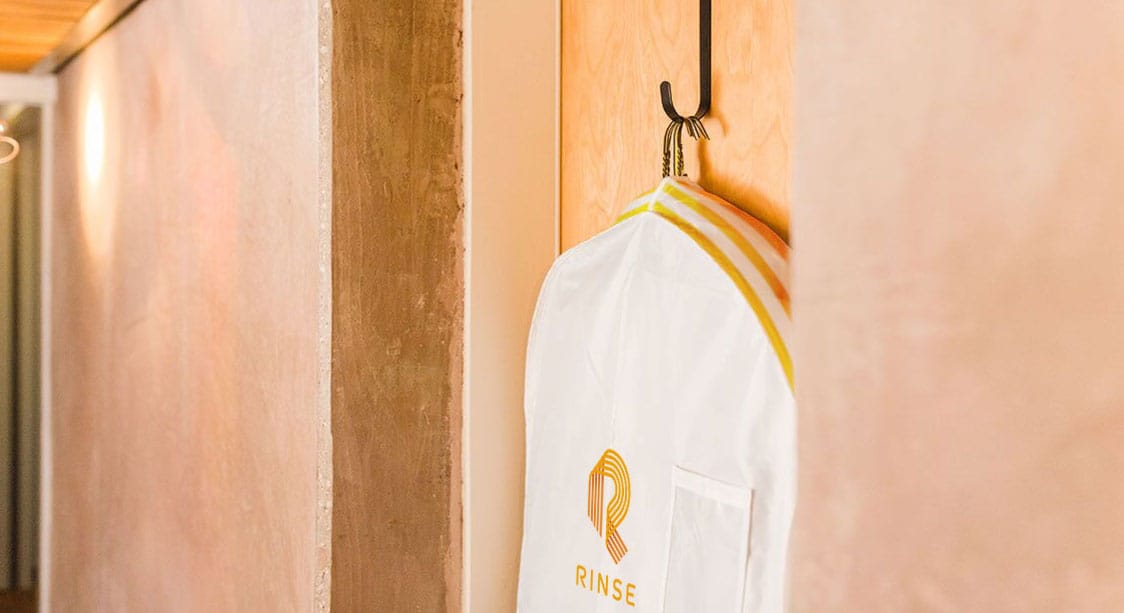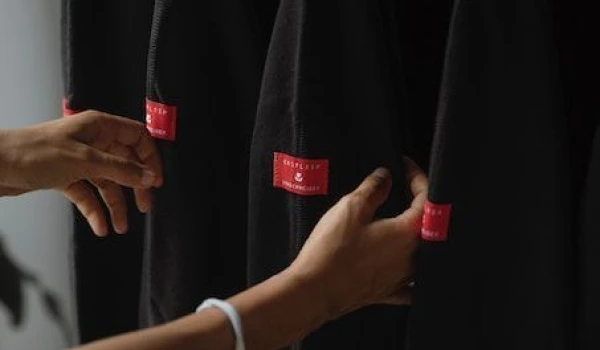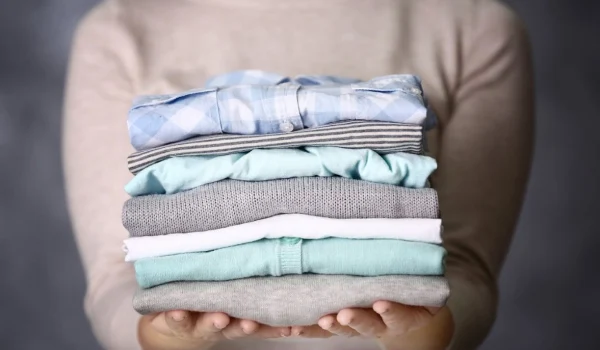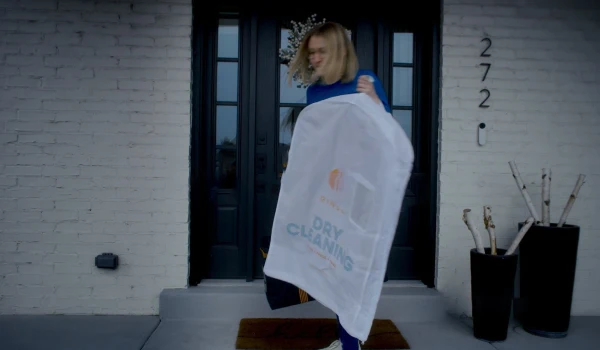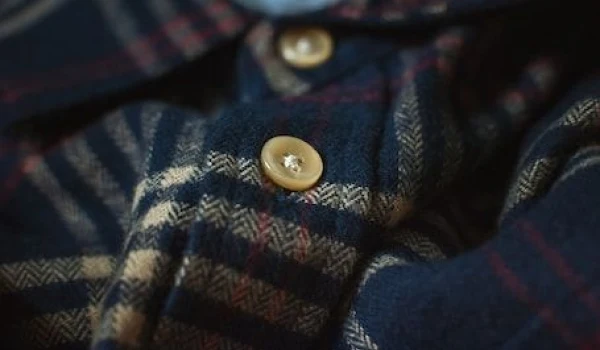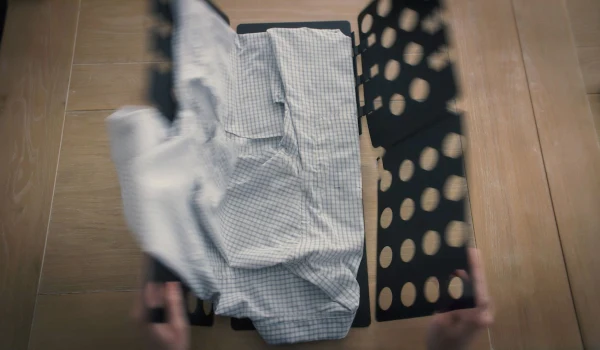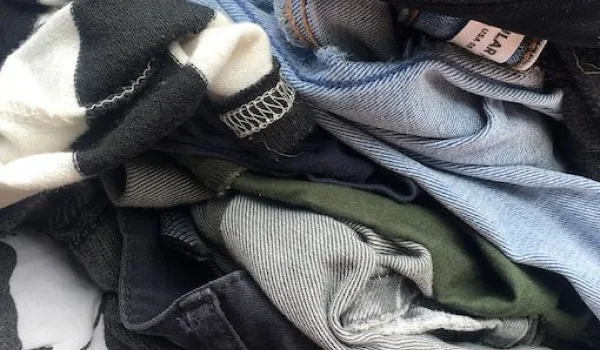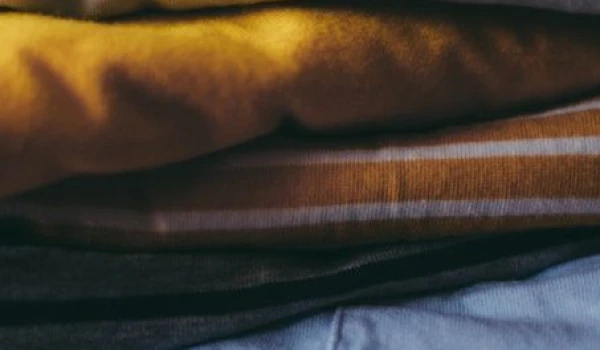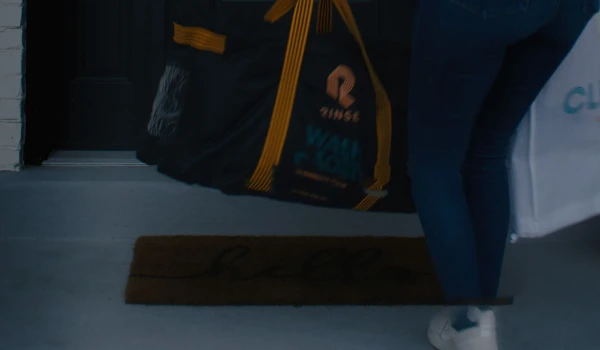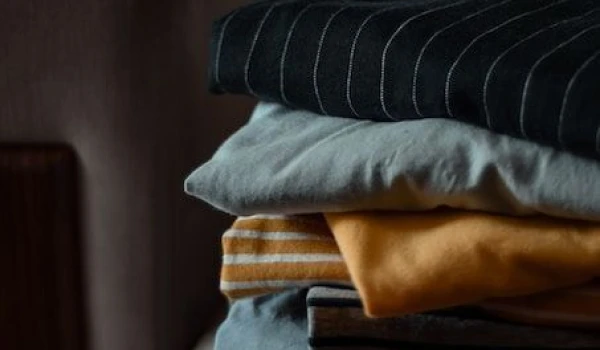Care
Clothing care tips to make your wardrobe last

How To Use Fabric Softener: A Complete Guide
Fabric softener is a game-changer when it comes to keeping your clothes feeling soft, smelling fresh, and looking great. However, there’s more to using fabric softener than simply adding it to your laundry load. In this comprehensive guide, we'll explore what fabric softener is, the different types available, and how to use each type effectively. We'll also share some helpful tips and tricks to ensure your laundry always comes out perfectly soft. Let's dive in!
What Is Fabric Softener And How Does It Work?
Fabric softener, also known as fabric conditioner, is a laundry product designed to soften clothes, reduce static cling, and impart a pleasant scent. The softening effect comes from conditioning agents that coat the fibers of your fabrics, making them feel smoother and reducing friction between them. This not only keeps your clothes soft and wrinkle-free but also helps them last longer by minimizing wear and tear during washing.
Types of Fabric Softeners
There are several types of fabric softeners available, each with its own set of benefits and drawbacks. Understanding the differences between them will help you choose the right one for your laundry needs.
Liquid Fabric Softener
Liquid fabric softener is a popular choice due to its ability to deeply penetrate fabrics during the washing cycle. It effectively reduces static, softens clothes, and adds a fresh scent. However, it’s important to use the right amount, as overuse can lead to buildup in your washing machine and even leave stains on your clothes. To avoid these issues, measure the liquid carefully and follow the manufacturer's instructions.
Dryer Sheets
Dryer sheets are another common option. These small sheets are coated with chemicals that melt when heated in the dryer, releasing softening agents that reduce static and soften clothes. Dryer sheets are convenient, easy to use, and relatively inexpensive. However, they can sometimes leave a residue on your clothes and inside your dryer, so it's important to clean your dryer regularly.
Dryer Balls
Dryer balls are a more eco-friendly option, typically made from wool or plastic. They work by bouncing around in the dryer, separating clothes and allowing hot air to circulate more efficiently, which speeds up drying time and reduces wrinkles. Dryer balls are reusable and don't contain any chemicals, making them a great choice for those with sensitive skin or allergies. However, they might not add as much scent or softness as liquid softeners or dryer sheets. To learn more, read our guide on what dryer balls do and the difference between dryer balls and dryer sheets.

When Should I Use Fabric Softener?
Fabric softener is generally a good addition to most laundry loads, as it keeps your clothes soft, reduces wrinkles, and makes them easier to iron. However, there are certain fabrics and situations where you might want to skip the fabric softener:
-
Athletic Wear: Most athletic gear is designed to wick away moisture, but fabric softeners can clog the fabric’s pores, reducing its effectiveness.
-
Towels: While fabric softener can make towels feel fluffy, it can also reduce their absorbency over time. Consider using it sparingly on towels.
-
Waterproof or Water-Resistant Fabrics: These fabrics are designed to repel water, and fabric softeners can interfere with this ability.
How To Use Liquid Fabric Softener
Using liquid fabric softener correctly ensures that your clothes come out of the wash soft and static-free. Here are the steps to use it effectively:
Select the Right Compartment
If you're using a washing machine with a fabric softener dispenser, pour the liquid into the designated compartment. For machines without a dispenser, wait until the rinse cycle and add the softener directly into the water.
Measure the Fabric Softener
It’s crucial to use the right amount of fabric softener. Too much can leave residues on your clothes, while too little won’t be effective. Most fabric softener bottles have measuring caps to help you pour the right amount.
Set the Washer Cycle
Once the softener is added, set your washer to the appropriate cycle based on the fabric type and color. Cold water is usually recommended for delicate fabrics and dark colors to prevent fading and shrinking.

How To Use Dryer Sheets
Dryer sheets are incredibly easy to use, but there are a few steps to ensure they work effectively:
Load the Dryer
Place your wet clothes into the dryer. Be careful not to overload it, as this can reduce the effectiveness of the dryer sheets and prolong drying time.
Add the Dryer Sheet
Toss one or two dryer sheets on top of your clothes before starting the dryer. The heat will activate the softening agents, leaving your clothes soft and static-free.
Select the Dryer Cycle
Choose the appropriate dryer cycle for your fabrics. Lower heat settings are better for delicate fabrics, while higher heat works well for heavier items like towels and jeans.
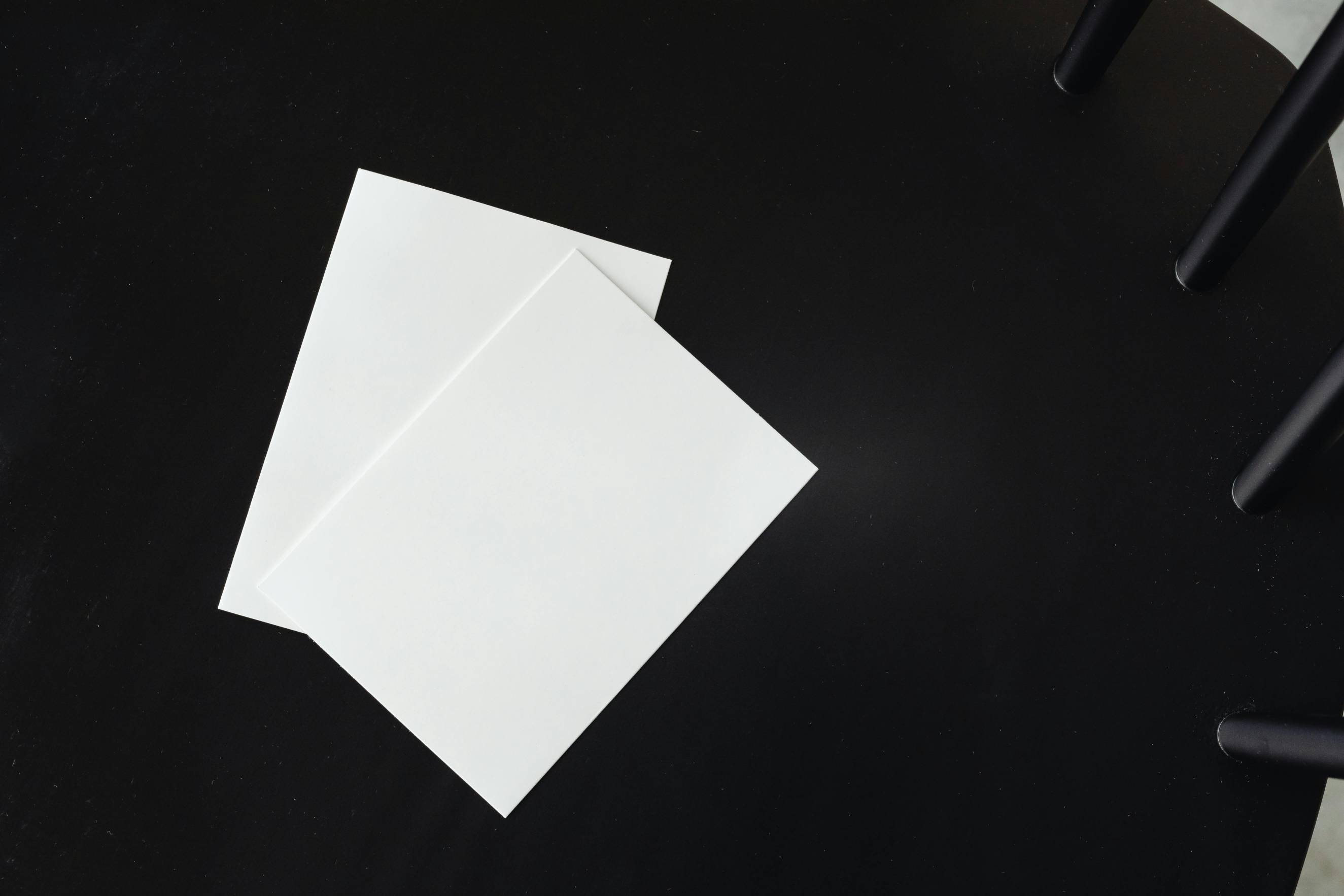
How To Use Dryer Balls
Dryer balls are a great alternative to traditional fabric softeners. Here's how to use them:
Gather Your Laundry
As with dryer sheets, load your wet clothes into the dryer.
Add the Dryer Balls
Place two or three dryer balls into the dryer along with your laundry. The balls will move around during the drying cycle, helping to soften fabrics and reduce wrinkles.
Monitor Drying Time
Dryer balls can reduce drying time, so check your clothes periodically to avoid over-drying, which can lead to shrinkage or damage.

3 Tips And Tricks For Using Fabric Softeners
To get the most out of your fabric softener, consider these helpful tips:
Clean Your Washer and Dryer
Regularly cleaning your washing machine and dryer prevents buildup from fabric softeners and dryer sheets, ensuring your laundry equipment functions properly and your clothes come out fresh. If your'e looking to conquer laundry smells, see our guide to how to make your laundry smell good.
Avoid Direct Contact
Never pour liquid fabric softener directly onto clothes, as it can cause staining. Always dilute it with water or use the designated dispenser.
Use Fabric Softeners Sparingly
Less is more when it comes to fabric softener. Overusing it can lead to residue buildup on your clothes and in your machine, reducing its effectiveness. If you're looking for alternatives to conventional softeners, see our guide on natural fabric softeners or how to make your own fabric softener.

Keep Your Clothes Soft And Fresh With Rinse
Using fabric softener is a simple yet effective way to keep your clothes soft, fresh, and free of static. However, managing your laundry routine can be time-consuming. That’s where Rinse comes in. As a professional laundry service, Rinse ensures your clothes are handled with care, using the right products and techniques to keep them feeling soft and looking their best. Whether you’re too busy to do laundry or just want to ensure your clothes are treated right, Rinse is here to help. Schedule a pickup today and experience the convenience and quality of professional laundry care.
Contact us at Rinse today to see our skill in action.

Have laundry or dry cleaning to do?
Rinse picks up, cleans and delivers 7 days a week. Amazingly awesome. Ridiculously simple.

How To Prevent Clothes From Shrinking: A Step-By-Step Guide
Accidentally shrinking your clothes during laundry can be frustrating, especially when it's a beloved item that's difficult to replace. To help you avoid this scenario, we've put together a comprehensive guide on how to prevent your clothes from shrinking. By understanding the causes of shrinkage and implementing the right care techniques, you can keep your garments looking their best. If you’re looking for more laundry tips, check out our list of hacks here!
What Causes Clothes to Shrink in the Laundry?
To prevent your clothes from shrinking, it's essential to understand what triggers this issue in the first place. Shrinkage often depends on the type of fabric and how much heat, moisture, and mechanical action it encounters during the laundering process.
Heat Exposure
One of the primary reasons for garment shrinkage is exposure to high temperatures. Washing clothes in hot water or drying them on high heat can cause the fibers to contract, leading to shrinkage. Natural fibers like cotton, wool, and linen are particularly susceptible to shrinking when exposed to heat. To prevent this, always wash clothes in cold water and use a low heat setting on the dryer or air dry them. To learn more about what clothes should go in the dryer, read our guide here.
Agitation and Mechanical Action
The physical agitation of clothes in the washing machine and dryer can also contribute to shrinkage. The friction and movement can cause the fibers to tighten and shrink. Delicate fabrics, such as wool and silk, are more prone to this type of shrinkage. To minimize this, consider using the delicate cycle on your washing machine or hand washing sensitive items to reduce mechanical action.
Incorrect Washing and Drying Methods
Improper washing and drying methods, such as overloading the washing machine or using the wrong detergent, can also lead to shrinkage. Overloading the machine can prevent clothes from moving freely, causing increased friction and agitation. Additionally, using harsh detergents or fabric softeners can weaken the fibers, making them more susceptible to shrinking. Always follow the care instructions on the label and avoid overloading your machine.

Types of Shrinkage in Clothes
Understanding the different types of shrinkage can help you take the necessary steps to prevent it from happening.
Felting Shrinkage
Felting shrinkage occurs in fabrics made from animal hair fibers, such as wool. These fibers have microscopic scales that lock together when exposed to moisture and heat, causing the fabric to shrink. This type of shrinkage is common in wool sweaters and can be avoided by washing wool garments in cold water and air drying them.
Relaxation Shrinkage
Relaxation shrinkage happens when natural fibers like cotton, linen, and silk, as well as synthetic fibers, relax back to their original size after being stretched during manufacturing. This type of shrinkage is more likely to occur during the first wash, especially if clothes are washed in lukewarm or hot water. To prevent relaxation shrinkage, wash new clothes in cold water and avoid using hot water in subsequent washes.
Consolidation Shrinkage
Consolidation shrinkage results from a combination of heat, moisture, and mechanical action. When clothes made of natural fibers are exposed to these elements, the tension created during manufacturing is released, causing the fabric to shrink. This type of shrinkage is common in t-shirts and other cotton clothes. To minimize consolidation shrinkage, use cold water, and avoid high heat settings in the dryer.

Fabrics More Prone To Shrinking
Certain fabrics are more likely to shrink due to their fiber composition and structure. Understanding which fabrics are prone to shrinkage can help you take extra care when washing and drying them.
Cotton
Cotton is one of the most common fabrics that shrinks, especially when exposed to heat. Cotton clothes should be washed in cold water and air dried to prevent shrinkage.
Wool
Wool is highly susceptible to felting shrinkage due to its natural fiber structure. Always wash wool garments in cold water and air dry them to maintain their shape.
Rayon
Rayon is a delicate fabric that can easily shrink if not handled properly. Hand wash rayon garments in cold water and air dry them to avoid shrinkage.
Linen
Linen is prone to shrinking when exposed to heat and moisture. To prevent this, wash linen sheets and garments in cold water and air dry them.
Silk
Silk is a delicate fabric that can shrink if washed or dried improperly. Hand wash silk items in cold water and air dry them to preserve their size and shape.
Denim
Denim can shrink when exposed to high heat, especially during the drying process. To prevent your jeans from shrinking, wash them in cold water and air dry or tumble dry on low heat. For more information, check out our ultimate guide to caring for your jeans here.

Fabrics Less Prone To Shrinking
Some fabrics are less likely to shrink, making them easier to care for.
Polyester
Polyester is a synthetic fabric that resists shrinking due to its durable fibers. It can be washed in warm water and tumble dried on low heat without much risk of shrinkage.
Nylon
Nylon is another synthetic fabric that is less prone to shrinking. It can withstand regular washing and drying without significant shrinkage.
Spandex
Spandex is a stretchy synthetic fabric that resists shrinking. It can be washed and dried without losing its shape, making it ideal for activewear and form-fitting garments.

How To Keep Clothes From Shrinking
Preventing clothes from shrinking requires careful attention to washing and drying practices. Here are some tips to keep your garments looking their best.
Read the Care Labels
Care labels provide essential information on how to properly care for your clothes to prevent damage, including shrinkage. Always follow the instructions on the label to avoid shrinking your garments.
Use Cold Water
Washing clothes in cold water is one of the most effective ways to prevent shrinkage. Cold water is less likely to cause fibers to contract, keeping your clothes in their original size and shape.
Air Dry
Air drying is the safest way to dry your clothes, as it eliminates the risk of shrinkage caused by heat exposure. Invest in a drying rack or line dry your clothes to preserve their size and shape.
Tumble Dry Low Heat
If air drying is not an option, use the tumble dry low heat setting on your dryer. This setting uses minimal heat, reducing the risk of shrinkage while still drying your clothes effectively.
Hand Wash
Hand washing is a gentle method that allows you to control the washing process, reducing the risk of shrinkage. This is especially important for delicate fabrics like wool and silk, which are more prone to shrinking.

How To Store Clothes To Prevent Shrinking
Proper storage is also crucial in preventing clothes from shrinking. Here are some tips to ensure your garments stay in their best condition.
Use Breathable Storage Containers
Store your clothes in breathable containers to prevent moisture buildup, which can lead to shrinkage. Avoid plastic containers that can trap moisture and cause fabric fibers to contract.
Avoid Overcrowding
Overcrowding your storage space can cause clothes to become compressed, leading to shrinkage. Give your garments enough space to breathe and retain their shape.
Choose Appropriate Hangers
Use sturdy, well-shaped hangers to prevent stretching and shrinking. Avoid using wire hangers that can distort the shape of your clothes.
Fold Heavy Items
Heavy garments like sweaters and denim should be folded rather than hung to prevent them from stretching out of shape and shrinking.

Will Dry Cleaning Prevent Shrinkage?
Dry cleaning is an effective way to prevent shrinkage, especially for delicate and hard-to-wash fabrics. Professional dry cleaners use non-water-based solvents to clean clothes, which eliminates the risk of shrinkage from heat and moisture exposure.
Not only does dry cleaning help prevent your clothes from shrinking, but it also effectively removes stains and maintains the integrity of your garments. At Rinse, we offer dry cleaning services 7 days a week, with convenient pickup and delivery straight to your door.
By following these tips and tricks, you can keep your clothes looking their best and avoid the frustration of shrinkage. Remember to always read care labels, use cold water, air dry when possible, and consider professional dry cleaning for delicate items. If you’re looking for more laundry tips, check out our other blogs on laundry care.

Try Rinse today!
Our laundry experts know the proper care for all fabrics, making sure your clothes come out the same size they were when they went in. Similarly, our dry cleaning practices keep your special outfits in good shape.
All we need from you is a bag filled with your dirty clothes. We'll take it from there — washing, drying, ironing, and folding. Schedule your first pickup to experience laundry bliss.
Contact us at Rinse today to see our skill in action.

Have laundry or dry cleaning to do?
Rinse picks up, cleans and delivers 7 days a week. Amazingly awesome. Ridiculously simple.

How To Separate Laundry Like a Pro
Hate it or love it, separating laundry is an essential part of laundry day. Properly separating your laundry can help prevent damage, preserve colors, and extend the life of your clothing. This guide will teach you everything you need to know to separate laundry like a pro.
Why Is Separating Laundry Important?
Before diving into the best practices for separating your laundry, it’s important to understand why this step is so critical in the washing process.
Separating Helps to Identify and Treat Stains
One of the primary benefits of separating laundry is that it allows you to inspect each item more closely. As you separate clothes, you can check for any stains or dirt that might require pretreatment. By catching these stains early, you can treat them before they set in, increasing the chances of removing them completely. For example, stains on white clothes often require immediate attention to prevent permanent discoloration.
Separating Preserves Your Clothing
Separating laundry by color and fabric type is crucial for preserving the integrity of your clothes. When you mix different colors, particularly dark clothes and white clothes, there's a high risk of color bleeding. For instance, dark color clothes, like a red shirt, can bleed onto lighter garments, leading to frustrating stains that are difficult to remove. Separating your laundry ensures that colors remain vibrant and that clothes maintain their original appearance.
Separating Protects Your Delicates
Delicate fabrics like silk, lace, and satin require special care during washing. These items can easily be damaged if washed with heavier or more abrasive materials. By separating delicates from other laundry, you reduce the risk of tearing, fraying, or stretching. Delicates should be washed on a gentle cycle or even hand-washed, depending on the fabric type, to ensure they stay in good condition.

Strategies For Separating Laundry
Properly separating your laundry involves more than just sorting by color. To ensure your clothes are cared for correctly, consider the following strategies:
By Temperature
One of the most effective ways to separate laundry is by the temperature at which it should be washed. Washing clothes at the appropriate temperature helps maintain their shape, color, and fabric quality. For example, washing in cold water is best for dark colors and delicate fabrics to prevent fading and shrinking. On the other hand, washing in warm or hot water is ideal for white clothes, towels, and heavily soiled items, as the heat helps to remove dirt and kill bacteria.
By Fabric
Separating laundry by fabric type is another critical strategy. Different fabrics require different care to avoid damage during washing. For instance, heavy fabrics like denim and towels should be washed separately from lighter, more delicate fabrics like silk or linen. Mixing fabrics of varying weights can cause excessive wear and tear on the more delicate items. Additionally, synthetic fabrics like polyester should be separated from natural fibers like cotton to prevent pilling and reduce the risk of damage from different washing requirements.
By Color
Color separation is perhaps the most well-known laundry sorting method. To prevent color bleeding and keep your clothes looking their best, separate laundry into three main categories: dark clothes, white clothes, and bright or medium colors. Dark colors should be washed together to prevent them from transferring dye onto lighter items. White clothes should always be washed separately to avoid picking up any stray colors. Bright or medium colors, such as reds, greens, and blues, should also be grouped together to avoid any color transfer.

How To Separate Your Laundry
Now that you understand the importance of separating laundry and some key strategies, here’s a step-by-step guide on how to do it effectively:
Read The Care Labels
Before starting the separation process, always read the care labels on your clothes. These labels provide essential information about how to properly care for each item, including recommended washing temperature, whether the item should be washed inside out, or if it requires dry cleaning. This step is particularly important for delicate fabrics and unique materials that may require special attention.
Sort Using Piles
Once you’ve checked the care labels, begin sorting your laundry into piles based on color, fabric type, and washing temperature. Start with the basics by separating your laundry into dark clothes, white clothes, and colored clothes. From there, you can create additional sub-piles for items that need special care, such as delicates, heavily soiled items, and clothes that require dry cleaning. Sorting your laundry into piles makes the washing process more organized and helps ensure that each item is cared for properly.
Sort Blended Fabrics
Blended fabrics, like cotton-polyester mixes, should be sorted separately from pure fabrics. Blended fabrics can have different washing requirements compared to single-fiber fabrics, which means they can be prone to issues like shrinking or color transfer if not washed correctly. By sorting blended fabrics separately, you can use the appropriate washing settings to maintain the integrity of the fabric.
Sort By The Amount Of Dirt On Items
Heavily soiled clothes should be washed separately from lightly worn items. Items like gym clothes, work uniforms, or outdoor gear can carry more dirt, sweat, and odors than everyday wear. Washing these items together with lightly soiled clothes can lead to cross-contamination, leaving your clothes less clean than desired. Pre-washing or soaking heavily soiled items can also help remove excess dirt before running a full laundry cycle.
Turn Your Clothes Inside Out
Turning clothes inside out before washing can help protect the outer surface from fading, especially for dark color clothes. This simple step also reduces the friction between garments during washing, which can cause wear and tear over time. For items with prints, embellishments, or delicate fabrics, washing inside out helps preserve their appearance and extends their lifespan.
Pretreat Stained Items
Before tossing stained items into the washing machine, it's important to pretreat them to increase the chances of stain removal. Use a stain remover or laundry detergent to treat the stained area and let it sit for a few minutes before washing. This step is especially crucial for white clothes or delicate items that can be easily damaged if the stain is not properly addressed.

Get Your Laundry Separated Professionally With Rinse
While separating laundry at home is a great way to care for your clothes, it can be time-consuming and requires careful attention to detail. If you want to ensure your laundry is separated and washed perfectly without the hassle, consider using Rinse. Rinse offers professional laundry services that take care of every step of the laundry process, from separating to washing to delivering your clothes back to you, allowing you to do laundry on your schedule.
Rinse uses advanced cleaning techniques and high-quality detergents to ensure your clothes are cleaned thoroughly while preserving their color and fabric integrity. With Rinse, you can trust that your delicates are handled with care, your dark colors won't bleed onto your whites, and your favorite garments will last longer. Additionally, Rinse offers dry cleaning services for items that require special care, ensuring all your clothing is treated according to its specific needs.
By choosing Rinse, you can skip the tedious process of laundry separation and enjoy the convenience of professional cleaning delivered straight to your door. Whether you need regular laundry services or simply want to maintain an organized laundry routine, Rinse has you covered.
Explore more tips on laundry care and make your laundry day easier with Rinse. From learning how to do laundry to a complete guide to machine capacity, our blog is full of helpful resources to ensure your clothes stay clean and fresh with minimal effort.
Contact us at Rinse today to see our skill in action.

Have laundry or dry cleaning to do?
Rinse picks up, cleans and delivers 7 days a week. Amazingly awesome. Ridiculously simple.

Now that the warm weather is here, it's time to enjoy al fresco afternoons with wine and cheese. Yet, too often a great outdoor dining experience is ruined by the little spills that mark up your new blouse or pants. Whether you're exploring a new city, enjoying the outdoors or savoring a summer dessert, don't sweat the small stains that you may encounter during the summer with our on-the-go DIY cheat sheet to help you along the way.
Food and drink

Whether it's a box of French macarons, fresh blueberry muffins or chocolate ice cream, summer is the time to indulge in your favorite treats. And it's no surprise that food and drinks can lead to some of the most common summer stains.
Made a mess during Sunday brunch? No worries. Soak up the stain with a napkin, ask your server for some club soda, and lightly dab the stained area. You can take common summer fabrics such as cotton, corduroy or linen to the bathroom to be washed with cold water and soap (this works for iced coffee stains too). For more delicate fabrics, such as silk or chiffon, take them to a professional dry cleaner for the best care.
Since it's also barbecue season, mishaps with ribs or burgers are bound to happen. For fresh stains, act quickly by scraping off any sauce on the fabric. Follow up by soaking the stained area in water. You can apply the same tactic for ice cream spills: rinse and repeat under cool water as necessary. For more stubborn stains, follow up with a professional cleaning.
Sunscreen, sweat and deodorant

You might take advantage of the great weather by lounging at the lake or hanging out on the beach, in which case SPF is a must. If you get some on your clothing, apply pressure with a clean towel to soak up the product and add liquid detergent before laundering as usual.
While you may look great in that poplin sundress or white linen shirt, embarrassing sweat stains can foil your outfit—especially if you're wearing summer whites. To help preempt this issue, make sure you choose an aluminum-free (or low-aluminum) antiperspirant, which won't leave a mark. If your deodorant does leave an unwelcome blemish, a quick cleaning hack is to use fabric softener sheets to remove any traces by rubbing one on the affected area. For delicate fabrics like rayon, blot the area with some water and soap before gently hand washing.
Try as we might, some sweat stains will remain. And, they tend to get darker over time becuase of continued heat and sunlight. It's best to try to prevent them before they occur!
Grass and dirt

Whether you're hiking the Grand Canyon, having a picnic in Central Park or enjoying a game of frisbee in your backyard, you might encounter a few grass or dirt stains—not too surprising if you're the outdoors type. For dirt stains, apply some dishwashing soap right away before tossing the affected article in the laundry. For shoes caked in dirt and grass, this stubborn stain can be easily removed by rubbing it with a damp cloth soaked in soapy warm water. Grass stains on clothing, however, can be extremely difficult to remove, so if you find yourself with one, we recommend a trip as soon as possible to a professional.
If all else fails, get thee to a professional dry cleaner!
Worried about keeping your swimwear in tip-top shape? We've got you covered with our guide to cleaning and preserving swimsuits.
Photos: freestocks.org, Brooke Lark, Nadia Jamnik, Kyle Ryan

Red clothes have a unique makeup, including different types of clothing dye. But is this why they bleed the most? Find out why red clothes bleed the most and how you can limit it.
Contrary to popular belief, red clothes are not more prone to color bleeding than any other color. Below we’ll discuss why this is and help you understand ways you can avoid color bleeding.
Why do red clothes color bleed?
More often than not, red garments color bleed simply due to the type of dye commercial clothing manufacturers oftentimes use when making red colored clothes. The dye is called direct dye and it is actually available in other colors, which are equally as susceptible to color bleeding. However, it’s commonly used with red colored clothing items. Therefore, red colored clothing is associated with color bleeding more than other colors.
Garments with red direct dye are much more likely to color bleed in the laundry as opposed to clothes that use fiber reactive dye. This is because of the chemical makeup of direct dye and it reacts with the fibers of the clothing.
Red color bleeding also can be a result of over dyeing or the dye not being properly settled in the fabric of the clothing.
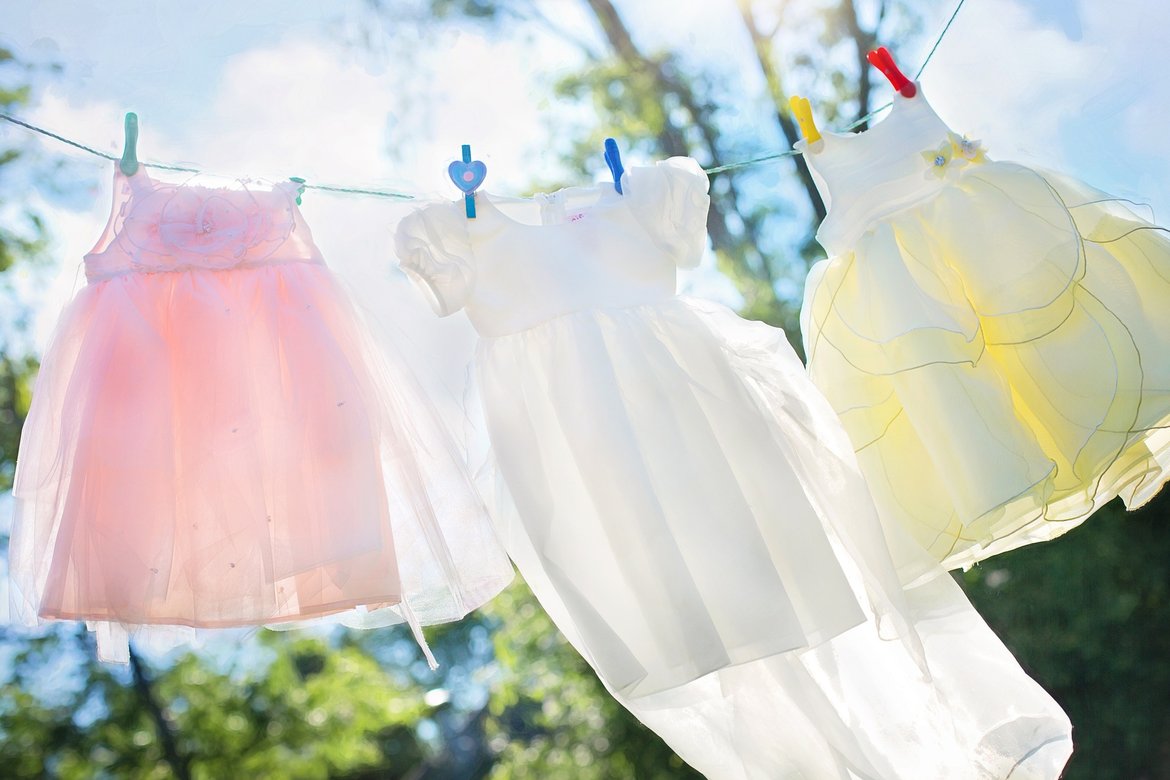
How do I avoid color bleeding?
Unless you are making your own clothes or dying your own clothes it’s difficult to know much about the dye used on your clothing items.
With that said, there are a few best practices you can follow regardless of they type of dye to limit your chances of experiencing color bleeding on your next laundry day.
- Always separate lights and darks. This is a mandatory practice at Rinse but you may be surprised to know that many people at home overlook this important step when doing their own laundry.
- Use a color fixative such as Retayne or Raycafix on your clothes pre-wash to help prevent color transfer.
- Use cold water over hot water when washing. Hot water can loosen up the fabric and increase the likelihood of color bleeding.
- When possible, adjust your washer settings to delicate or something similar to reduce the amount of friction inside the washing machine.
- Add color catcher sheets to the machine to help catch and hold dyes during washing.
- Turn your clothes inside out to reduce both color fading and color bleeding.
As you can see there are several steps you can take to help reduce the chances of color bleeding. By implementing these basic tips you’ll not only limit color bleeding but improve the lifespan of your clothes.

Introduction
When you have clothing that needs to look sharp, like a suit, dress, sweater, or dress shirt, chances are you take it to the dry cleaners. But many nice articles of clothing don’t need to be dry cleaned – often, having your clothing laundered and pressed is a better choice.
The Basic Difference Between Laundry and Dry Cleaning
The short answer – water. However, there are other differences such as the cleaning process, chemicals used, suitable fabrics, effectiveness in removing certain stains, impact on the environment, and cost of service.
Dry Cleaning:
When your clothes are dry cleaned, non-water-based solvents (such as perchloroethylene) are used to remove stains and odors, before they are crisply pressed. In general, dry cleaning is ideal for delicate fabrics, with some garments having "dry clean only" instructions. Note that the cost of dry cleaning is considerably higher on a per-piece basis, and requires specialized equipment.
Laundering:
With laundered items, water and detergent are used. Your clothes are soaked and agitated in a commercial-grade washing machine, emerge slightly damp, and then are individually pressed. Laundry cleaning is suitable for most clothing fabrics, such as cotton, polyester, denim, and linen.

Why Launder & Press?
So what's the benefit of using Launder & Press?
• It's ideal for removing sweat, oils, and dirt: Laundering is more effective than dry cleaning at removing sweat and oil from fabrics, so it is typically the best choice for dress shirts and cotton blouses. After clothes are laundered, they are pressed and hung for that crisp, fresh-from-the-cleaner look.
• It's generally more sustainable: While laundering still consumes water and energy, there are eco-friendly detergents that can be used to mitigate the impact on the environment. Modern consumer appliances or commercial-grade ones are constantly becoming more efficient. Dry cleaning traditionally uses solvents that are toxic to the planet and can cause a reaction to sensitive skin.
• It's more cost-effective: Whether washing laundry at home or not, the cost of cleaning each garment is much lower than if done by dry cleaning. Water and detergent are much cheaper than perchloroethylene, and that is before considering the cost of the equipment needed for dry cleaning.
• It's gentle on fabric: The chemicals used to dry clean your clothes can cause fabrics to deteriorate over time. Laundering, on the other hand, removes stains and everyday grime using water and gentler detergents.
High-quality laundry services like Rinse read the care label on your clothing and make the call between chemical dry cleaning and laundering to maximize the life of your clothes. When you’re the one making the call, read the label: if it doesn’t say “Dry Clean Only,” ask for Launder & Press. Your clothes will thank you!

Why Dry Clean?
You may be thinking – why on earth would anyone choose to dry clean when Launder & Press is just as effective (if not more in some cases) and gentler on fabrics? Well, the truth is, it depends on the fabric and the piece.
• It's ideal for clothing made of natural fibers, like silk, cashmere, or wool because water can hurt the fabric. Water can cause the fibers in the fabric to become rigid and can lead to shrinkage.
• It's a way to ensure the longevity of your clothes: Dry cleaning eliminates the risk of your clothes bleeding, fading, stretching, or becoming distorted in the washer or dryer.
• It's how to remove certain odors: Some smells, such as smoke or mildew, are not fully removed during a traditional laundry wash. Dry cleaning is more effective in this department.
• It's often the only way to get out certain stains: When an item is dry cleaned, it also goes through the “pre-spotting” process where an experienced cleaner will examine each garment to locate stains and determine the source so that they can treat the stain with the appropriate non-aqueous solvent. It’s not uncommon for a pre-spotter to have decades of experience!
A helpful tip to extend the life of your clothes: If you know the source of any stain on your garment, let your dry cleaner know. Be it ketchup, wine, or a splash from a puddle, your dry cleaner will use that information to choose the right solvent and minimize the risk of damage.

Have laundry or dry cleaning to do?
Rinse picks up, cleans and delivers 7 days a week. Amazingly awesome. Ridiculously simple.

Learn More About Rinse
There’s a reason both dry cleaning and launder & press are offered today – each serves a different, valuable purpose. Both are aptly named and both keep you looking sharp!
We have you covered at Rinse as we offer both Dry Cleaning and Launder & Press solutions! Sign up here and try any one of our award-winning services.
In addition, you can learn more about How Dry Cleaning Works from our COO James. He grew up in dry cleaning!
Contact us at Rinse today to see our skill in action.
Topics
Rinse Drop
We offer pickup and delivery if you can’t be present between 8pm and 10pm.
Our Valet will pick up or deliver your order to your doorstep or concierge, at which point you’ll receive a text with a photo showing where your items were left.
You can enable Rinse Drop on any (or all) of your orders.

